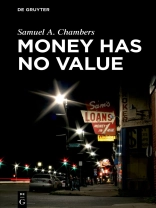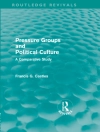We need a new theory of money. The still-dominant theory of money as taught in intro textbooks is 100+ years old, and for almost that long we have known that it’s totally wrong. The best alternative are ‘heterodox’ accounts developed in the 90s and 00s. These are indeed better overall descriptions of money, but they remain incomplete and inadequate: they rely too much on why the orthodoxy is wrong, thereby incorrectly assuming there is only one alternative (so-called heterodoxy). Money has no value develops a new (more subtle, more sophisticated) theory of money. It takes more seriously than any other work to date, the depth and seriousness of the fundamental claim that all money is credit. Money is not a thing, but a marker of a social relation of credit and debt between two parties. Money is not value itself; no form of money (as money) ever possesses any positive, intrinsic value. Second, the book shows that not only is all money credit, but that in an important theoretical sense, all credit is money to the extent any credit/debt between two parties has the potential to be transferred to another party (thereby functioning as money). Finally, the book links this radical credit theory of money to today’s concrete money practices: this includes global capital flows, national and international monetary policy, and most of all the daily turnover in the money markets. The book therefore develops the needed conceptual framework to ask questions like: what is going on with Bitcoin (much less Game Stop) in 2021.
İçerik tablosu
Preface
Introduces readers to the biggest questions about money and articulates the essential argument of the book: money has no value, because money is nothing more or less than a relation of credit/debt between at least two parties. The preface also gives readers a brief overview of the entirety of the book, indicating the importance of exploring: the history of money, the history of theories of money, and contemporary accounts and debates over money. Shows clearly why theories of money cannot be adequately divided into ‘orthodox versus heterodox’ and gives the reader the outlines of my alternative theory of money which rejects orthodoxy while moving well beyond the so-called heterodox account.
Chapter One: How to Do the History of Money
This crucial framing chapter opens with an important note on methodology, where I engage in some crucial epistemological and historiographical questions. Money cannot be determined and understood simply by its empirical history, nor can it be explained without reference to that history, and this is because history cannot stand in for theory, while at the same time, theory cannot itself explain history. This book responds to this fundamental epistemological and ontological issue by addressing the theories of money that history has itself produced.
This means that in this first chapter it is necessary to provide an overview of the history of theories of money. Most heterodox accounts of money attempt this, but they fail to give a rigorous, subtle, or deep sense of that history because they lump everything into the categories of orthodox or not orthodox. Instead, I set out here to create a ‘matrix’ of money theories based on answers to three basic questions that any theory of money most address: 1) real or monetary analysis, 2) commodity or claim, and 3) quantity theorem, yes or no. Working through these choices I produce a matrix of 8 different money theories, giving the reader a more fine-grained accounting of the history of theories of money than has heretofore been available.
Chapter Two: Money is Credit
This chapter is the cornerstone of the book, as it makes the primary case for the basic credit theory of money. It does this by returning to Mitchell Innes’s crucial work from the early twentieth century, a source that has already been identified by the leading lights of money theory today (see chapter three), but which I argue has never been fully appreciated for the depth of its insights and the radicality of its overall implications.
Starting with Innes, I argue for a fundamental rethinking of the very idea of economic exchange. Both classical political economy and the neoclassical paradigm of economics conceptual ‘exchange’ – the fundamental economic activity – as the swapping of one commodity for another. I argue instead that in a capitalist social order we must grasp economic exchange as something utterly different: the swapping of a commodity (with intrinsic use-value) for a credit (a relation of debt that has no intrinsic value). This redefinition of exchange, based on a far-reaching interpretation of Innes will serve as the foundation for all the arguments to come in the book
Chapter Three: Money Theories Today
The first of these arguments takes the form of a sympathetic but still biting critique of the two dominant theories of money today: Randall Wray’s post-Keynesian ‘modern money theory’ and Geoffrey Ingham’s heterodox account. Both authors are to be repeatedly praised for moving the debate on money forward, and for uncovering so many of the pervasive myths and falsehoods of the commodity theory of money that has undergirded the neoclassical paradigm for almost 150 years. But I show here that both theories come up against significant limits and that neither can serve as an adequate guide to understanding money rigorously in twenty-first-century capitalist social orders.
In Wray’s case, the correct instinct that the orthodoxy is wrong leads often to a false logic by which anything not orthodox must be right. In some ways Wray simply fails to develop a robust theory of money because he skips that step, rushing from the false orthodox theory to a set of policy proposals (particular around government debt). Ingham’s work is much more rigorous, significant, and imposing, and I affirm that to date his has been the best theory of money available. But in addition to oversimplifying the history of money, Ingham fails to pursues the credit theory to its radical and logical ends. He therefore traps himself in some sociological faults, particularly the idea that money as debt could be a ‘debt to society.’ I show that credit and debt can only be a relation between identifiable parties, and that ‘debt to society’ not only proves conceptually incoherent but also leads us astray in trying to make sense out of today’s money practices (see Chapters Five and Six).
Chapter Four: All Credit is Money
Here I push beyond Ingham and all other extant theories of money by taking the credit theory to its logical conclusion. Many writers have affirmed Innes’s basic point that all money is credit while trying to hold onto a fundamental (ontological) distinction between credit as a mere promise to pay, and money as the instrument of payment itself. I show here that to take the credit theory of money seriously, we have to admit that in conceptual terms, it is impossible to distinguish strictly between credit and money. The practical distinction proves crucially important (some credits do not function as money, while some do), but this empirical fact cannot substitute for theoretical proof. Accordingly, this chapter makes the case for the following five theses, which could be understood as the book’s fundamental theses on money:
Chapter Five: Money Markets
At this juncture my book takes a turn that has truly not been attempted in other efforts to theorize the nature of money: it directly addresses today’s money markets, the site of trillions upon trillions of turnover in denominated money value, and attempts to make sense of them in terms of the theory of money advanced so far. I open the chapter with a brief but important critique of Stephanie Kelton’s very recent (and exploding in popularity) book, The Deficit Myth. This forms an important segue, because Kelton’s conceptualization of money as ‘points’ issued by the government, completely fails to take account of the relations of credit and debt, and their circulation in today’s money markets.
The chapter offers a rather straightforward (but not for that reason any less important) introduction to the ‘balance sheet model’ of understanding money, particularly as exemplarily illustrated in Perry Mehrling’s work. Starting with the basic understanding of the way that loans create money through the simultaneous creation of both an asset and a liability on the balance sheet of both the creditor and the debtor, I move on to map out how the $7 trillion dollar (daily) repo market works. This explanation allows me to address derivatives. Derivatives are doubtless a crucial aspect of capitalist society today and essential to the way money works, yet most works on the theory of money are completely silent on them. I explain how the radical credit theory of money can makes sense of derivatives – precisely as money. Finally, but quite importantly, this lets me address the issue of the ‘price’ of money in money markets, the way in which credit/debt, which has no value, can be exchange for other forms of credit/debt, which similarly have no value. This leads me to a theory of financial exchange as the swapping of money-credit for money-credit – a complement to and extension of the theory of economic exchange first developed in chapter two.
Chapter Six: Money Today
I conclude the book not with theoretical speculation or historical prediction, but with a brief look at some of the most pressing money-questions facing us today. I address, in turn, ‘world money’ (from the gold standard, to the US dollar as the international reserve currency), ‘cryptocurrency’ (including bitcoin and blockchain technology itself), and conclude with a few remarks on the nature of money and capitalism.
Yazar hakkında
Samuel A. Chambers teaches political theory, cultural politics, and political economy at Johns Hopkins University. He is co-Editor-in-Chief of the journal Contemporary Political Theory and series co-editor of Routledge’s Innovators in Political Theory. His interests are broad and interdisciplinary—ranging from central issues in social and political theory, to engagements with contemporary feminist and queer theory, to contributions to critical television studies. All of his work maintains a core concern with a sort of ‘glue’ that holds together things—e.g., political regimes, sex/gender identities, pedagogical relations—in a way that is neither narrowly political (in the traditional sense of legislation or public policy), nor reductively socio-biological, nor grounded in ethics or morality à la so-called normative political philosophy. His published writings are similarly wide-ranging. He has authored seven books, edited four more, and published more than thirty journal articles, along with numerous chapters and essays. His most recent book is Capitalist Economics (OUP 2022).












